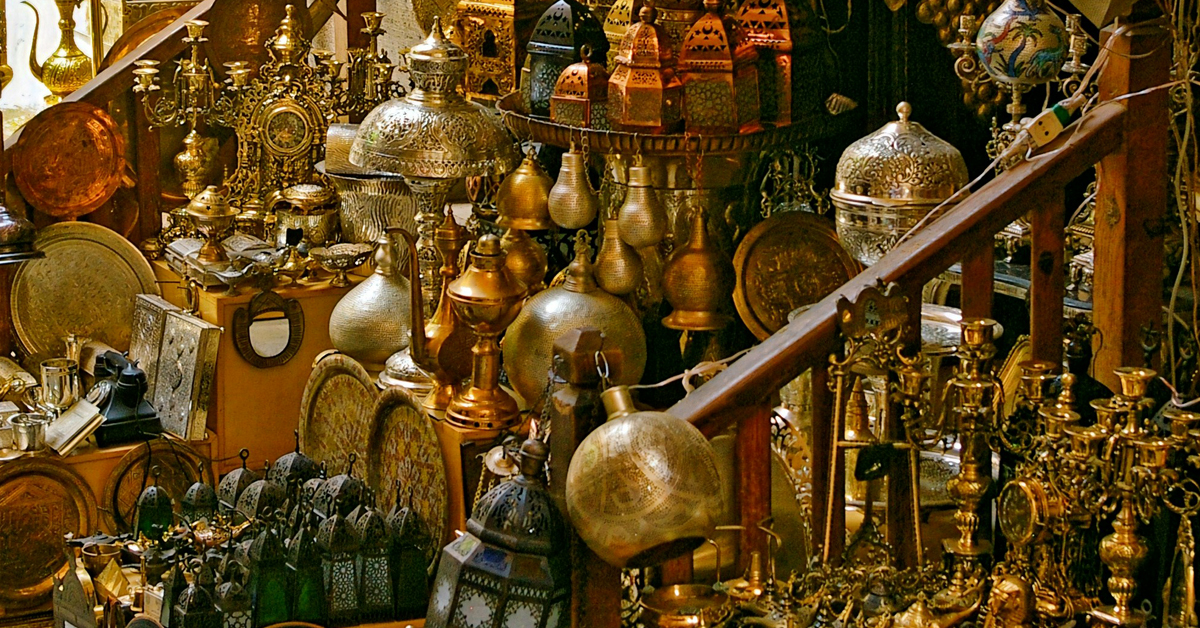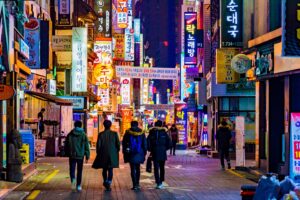Best Things To Buy In Khan El Khalili (A Local’s Guide)
4 min read
Khan el Khalili is a historic open-air souq packed with medieval mosques, lively cafes and mazes of colorful shops.
It’s an absolute must on your Cairo itinerary to soak in some local atmosphere and load up on unique local handicrafts.
But Khan el Khalili is also notorious for aggressive vendors. And if you can believe it: about 60% of all items at this souq are not even made in Egypt.
That means if you’re looking for beautiful handcrafted products you’ll have to do some digging through the cheap Chinese dupes and plastic pyramids.
What are the best things to buy in Khan el Khalili? And how can you plan your visit to avoid the hassles and find the best treasures?
I’m an expat living for over a decade in Cairo – and I’ve been visiting Khan el Khalili for years to explore its history and Sultan-era architecture.
And this is my ultimate guide to shopping in this legendary souq.
Best things to buy in Khan el Khalili:
1. Metal lamps and lanterns
Head to the historic gate Bab al-Ghuri for an array of shops that sell colorful metal lamps decorated with intricate carvings and colored glass.
Bab al-Ghuri is especially magical at night when hundreds of the lamps are lit and the intricate metalwork casts patters on the walls.
These metal lamps range from enormous round chandeliers decorated with Arabic calligraphy that are powered with lightbulbs to small, square candleholders.
There are also electric egg-shaped lanters – especially popular during Ramadan – made with a mosaic of colorful glass pieces.
Egypt’s famous Ramadan lanterns, or fanoos, were invented in Fatimid-era Egypt (10th to 12th centuries). They illuminated the streets during the holy month when the faithful walked to mosques for late-night prayers.
Metal lamps are very durable and pack easily. You can find many of them at Bab al-Ghuri but also scattered around smaller shops all through Khan el Khalili.
2. Wooden boxes with mother of pearl
Khan el Khalili has many wooden boxes inlaid with mother of pearl that make beautiful handmade souvenirs.
These elegant boxes range in shape and dimension from pocket-sized to coffee-table large. They’re made with either mother of pearl or cheaper materials like conch seashells and plastic.
Inlay work has a long tradition in regional art and furniture. Ancient Egyptians used the technique to adorn wooden shrines and mummy covers.
Mother of pearl boxes are made in a painstaking process. The artisan first cuts the beech wood and nails it together. The box is then decorated with white resin and hundreds of mother of pearl pieces. It’s later smoothed down with sandpaper and lined inside with velvet.
3. Ancient Egyptian figurines
You’ll find rows of Ancient Egyptian figurines, pyramids, ankhs and scarabs piled high at Khan el Khalili at an array of shops.
Quality ranges from masterful replicas that could easily pass for the real thing – to cheap and sloppily made figurines with creepy and disproportionate features. Browse a few shops and you’ll easily find some quality pieces.
A small alabaster statue of a pyramid or an ancient Egyptian goddess carved from stone makes a beautiful souvenir.
You’ll find these figurines all throughout Egypt’s tourist souqs, especially in Luxor where the alabaster is especially fine.
These statues range from proud figures of feline goddess Bastet and Nefertiti to the canopic jars the ancients used to store mummy innards.
The statues can be made of anything from alabaster and heavy stone to cheap, painted plastic. It’s easy to tell the difference by the weight and feel of the statue.
How to get to Khan el Khalili
Take an Uber/Careem to Azhar Mosque (a place most drivers easily recognize) and the bazaar is just across the street (there’s an underground passageway for pedestrians).
I always leave from Azhar Mosque, too, because the spot is easy to find for drivers and has plenty of space for a taxi to pull over (no getting lost in narrow alleys).
Khan el Khalili is pedestrian only so your taxi cannot drop you off inside the souq itself (which is all narrow streets with no cars.)
Opening times (and when to visit)
Most shops open around 9 am until midnight.
Friday mornings are quiet with most shops closed for weekly prayers. Sunday is also slow, though plenty of vendors stay open.
Most shops stay open during Ramadan though you might find a single salesperson in charge of a few different shops.
Weekends and nights are crowded.
Summers are hot so pack lots of iced water – and don’t forget your hat and sunscreen.


